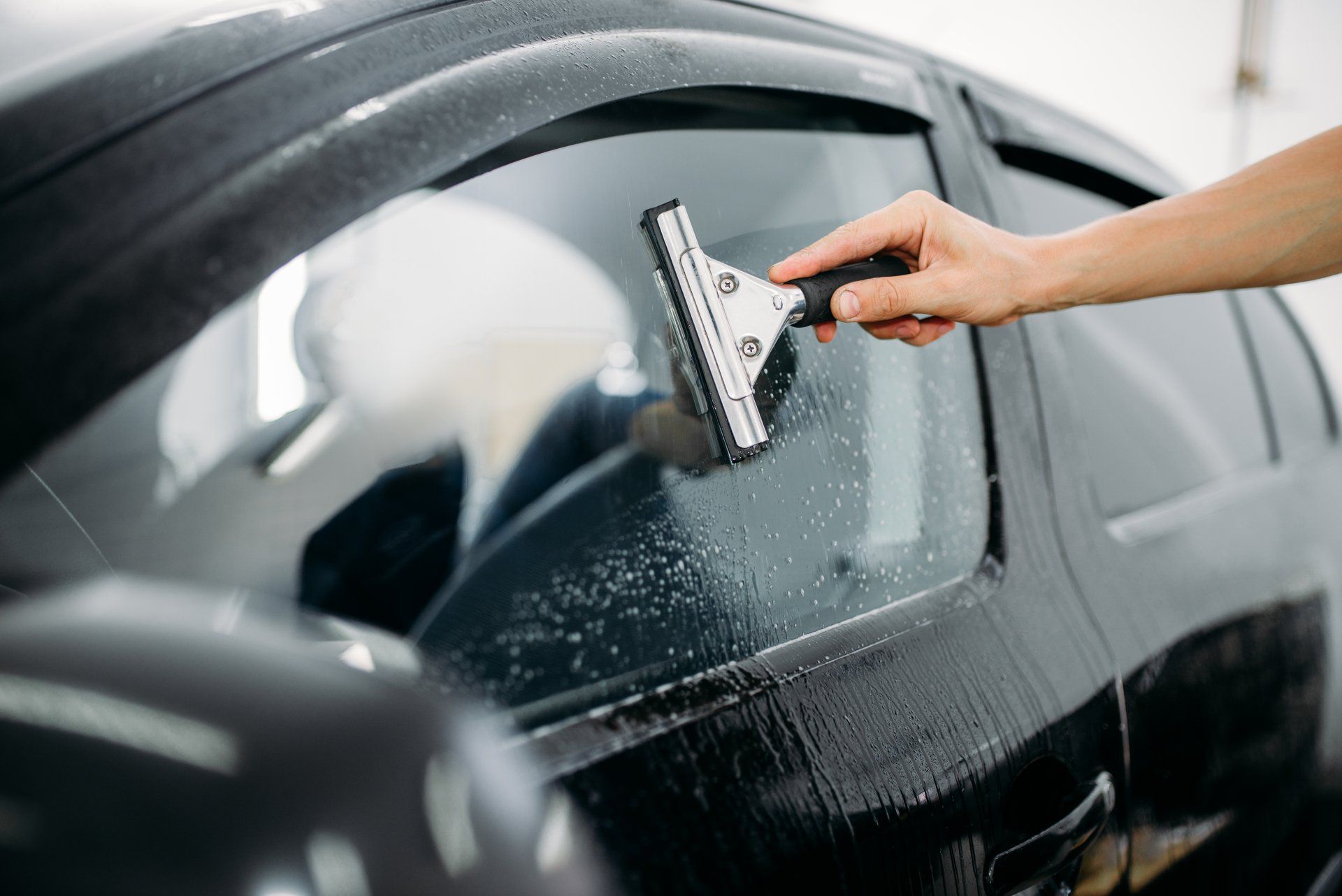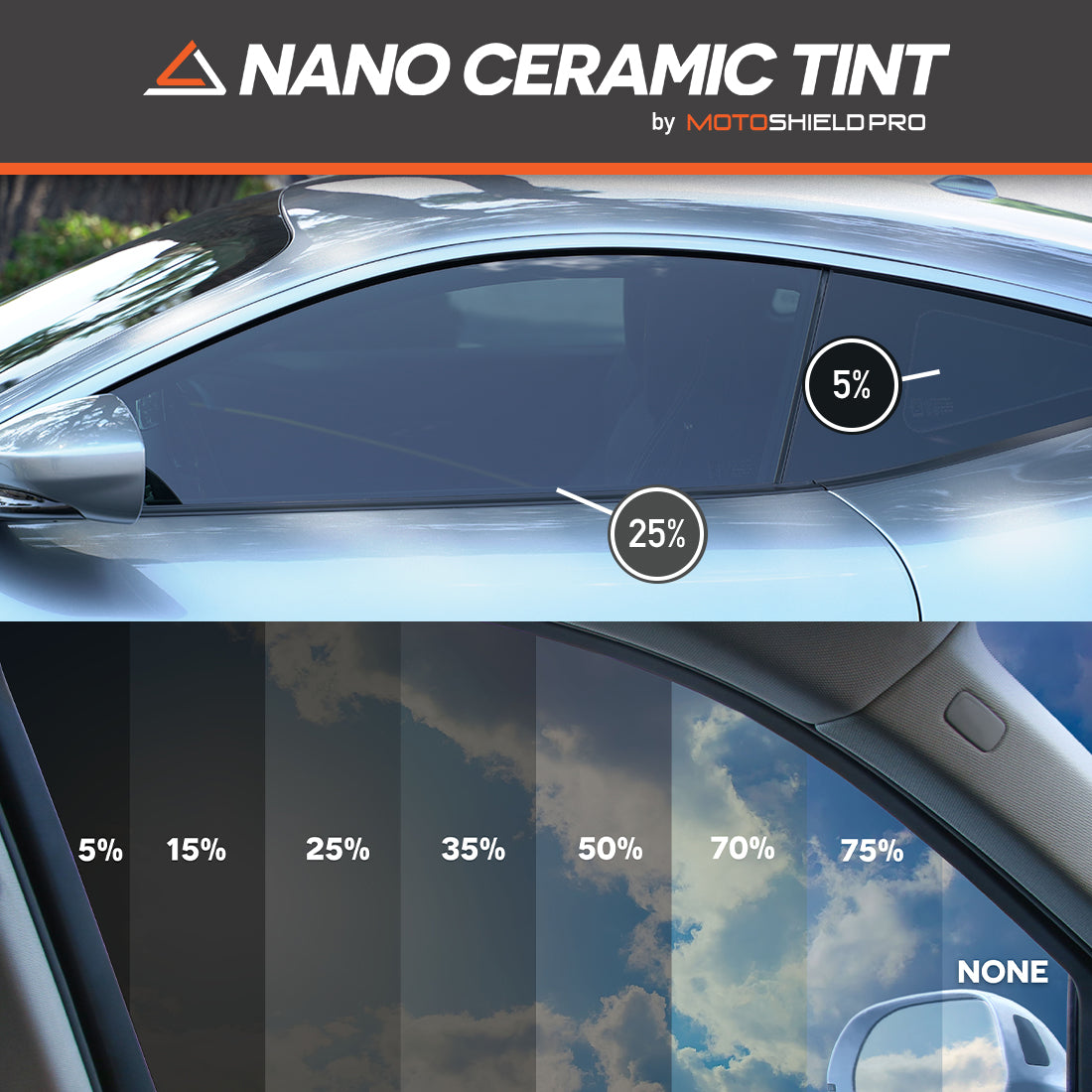Window Tinting Options: Find the Right Shade for Your Style and Requirements
Choosing the ideal window tint for your lorry includes a cautious factor to consider of numerous elements, including personal looks, functional requirements, and lawful constraints. With options varying from light tintss that provide marginal personal privacy to darker shades that boost seclusion, the selections can be overwhelming.
Understanding Window Tinting Degrees
When considering window tinting, it is essential to understand the different degrees of tint offered, as they dramatically influence both appearances and capability. Window tinting is categorized based on Noticeable Light Transmission (VLT) portions, which show the quantity of light enabled to go through the glass. The VLT percent can vary from extremely light (over 70%) to extremely dark (below 5%)
The key levels of tint include clear, which uses UV defense without altering presence; light tint (over 50% VLT), which somewhat decreases glow while preserving exposure; medium tint (around 35% VLT), striking a balance between personal privacy and light transmission; and dark tint (below 20% VLT), giving considerable personal privacy and warmth reduction but limiting exterior exposure.
Comprehending these degrees is crucial as they can impact driving safety, lawful conformity, and personal convenience. Additionally, local policies usually dictate permitted tint levels, varying by state or town. Prior to selecting a color, it is recommended to study and ensure adherence to these laws while considering personal choices for design and practical advantages.
Popular Tint Tone Explained

One of the most preferred alternatives is the classic dark tint, normally varying from 20% to 5% VLT (Visible Light Transmission) This shade supplies optimum privacy and a streamlined, innovative look. It successfully obstructs UV rays and heat, making it excellent for sunny environments, though it might limit exposure during the night.
Conversely, lighter tones such as 35% or 50% VLT give a much more refined look while still providing some level of personal privacy. These tones are ideal for those seeking an equilibrium between looks and capability, as they allow for much better exposure and adhere to various legal requirements.
One more arising choice is the ceramic tint, which can come in a range of shades - window tinting. It uses premium heat rejection and UV security without dramatically modifying the vehicle's appearance

Lawful Laws for Window Tinting
Comprehending the legal laws surrounding window tinting is important for lorry owners looking to tailor their cars and trucks. Each state in the U.S. has details laws controling the darkness or agility of window tintss, usually gauged by Visible Light Transmission (VLT) portion. VLT refers to the quantity of light that can travel through the movie and the glass integrated.
In many states, guidelines determine different VLT portions for various windowss, including front windshields, side windowss, and back windowss. For example, some states may enable a tint of 70% VLT for windshields while allowing darker tintss for rear windowss. In addition, certain states have limitations on reflective tintss, which can develop glare for other vehicle drivers.
Failure to abide by these regulations can result in fines, mandated elimination of the tint, and raised insurance premiums. Car proprietors need to consult local legislations or my link state DMV web sites to guarantee they are within lawful restrictions prior to waging installation. Understanding these policies not only assists prevent lawful effects yet additionally ensures a safe driving experience.
Benefits of Different Tint Products
Checking out the advantages of different tint materials reveals considerable advantages that can enhance both the performance and aesthetic charm of an automobile. Each product supplies distinctive features matched to details demands and choices.
Dyeded window films are popular for their affordability and ability to decrease glow. They successfully block UV rays, safeguarding the inside from fading, though they may not offer the highest heat denial. Metalized films, on the other hand, offer premium warmth decrease and UV defense because of their reflective buildings. They can boost privacy and security yet may disrupt electronic signals.
Ceramic window films represent a costs choice, providing exceptional warmth rejection while keeping visibility. They are non-metallic, hence avoiding any kind of signal disruption, and are very resilient, standing up to scratches and fading gradually. Additionally, ceramic films do not have dyes, making sure a longer-lasting look.
Lastly, crossbreed films combine components from dyeded and metalized options, using a balanced performance in regards to warmth being rejected, glow decrease, and cost. Each tint product serves distinct objectives, allowing car proprietors to choose the most effective suitable for their way of living and aesthetic preferences, eventually boosting their driving experience.
Choosing the Right Tint for You
Discovering the right window tint entails considering various aspects, consisting of individual choices, vehicle type, and regional laws. Initially, assess your personal style and preferred degree of personal privacy, as these will certainly guide your choice of tint shade. Darker tintss give enhanced privacy but may not be appropriate for all motorists, specifically those who choose a more open feel inside their car.
Next, consider your car type, as the size and shape of windowss can affect the efficiency of particular tintss. Bigger windowss may profit from reflective tintss that lower glow while smaller sized windowss might be more suited to dyeded films that use subtle aesthetic appeals.
Furthermore, it's important to check local laws relating to window tinting. Several states enforce limitations on the allowable darkness and reflectivity, specifically for front windowss. Conformity with these legislations is necessary to prevent penalties and make sure security.
Lastly, review the tint product that finest fits your requirements. Options consist of dyeded, metalized, ceramic, and crossbreed films, each offering one-of-a-kind advantages relating to warmth rejection, UV defense, and toughness. By thinking about these variables, you can confidently pick a window tint that straightens with your style and useful demands.
Conclusion
Finally, picking the suitable window tint needs careful consideration of numerous aspects, including VLT portions, local guidelines, and the desired visual. Various tint materials use unique benefits that can improve vehicle comfort and security. By extensively understanding the offered choices and straightening them with practical requirements important site and private choices, helpful site one can achieve an optimal equilibrium between style and functionality in window tinting selections.
Picking the proper window tint for your car includes a mindful factor to consider of numerous factors, including personal aesthetics, functional requirements, and legal restrictions. Each state in the U.S. has specific laws governing the darkness or agility of window tintss, commonly determined by Visible Light Transmission (VLT) portion. Some states may enable a tint of 70% VLT for windshields while allowing darker tintss for back windowss.Finding the right window tint includes thinking about various factors, including individual choices, automobile type, and local laws.In verdict, choosing the suitable window tint needs careful consideration of numerous aspects, including VLT percentages, neighborhood guidelines, and the preferred aesthetic.
Comments on “Does Window Tinting Improve Your Home’s Safety? Learn More”